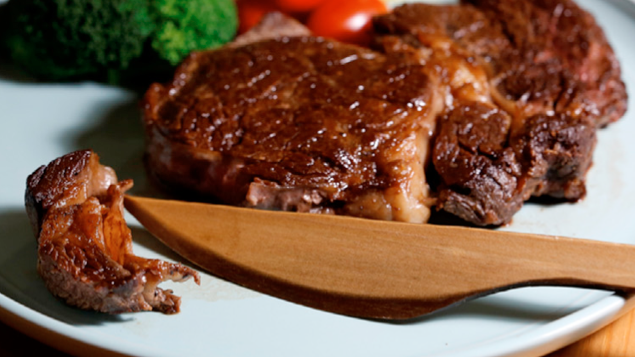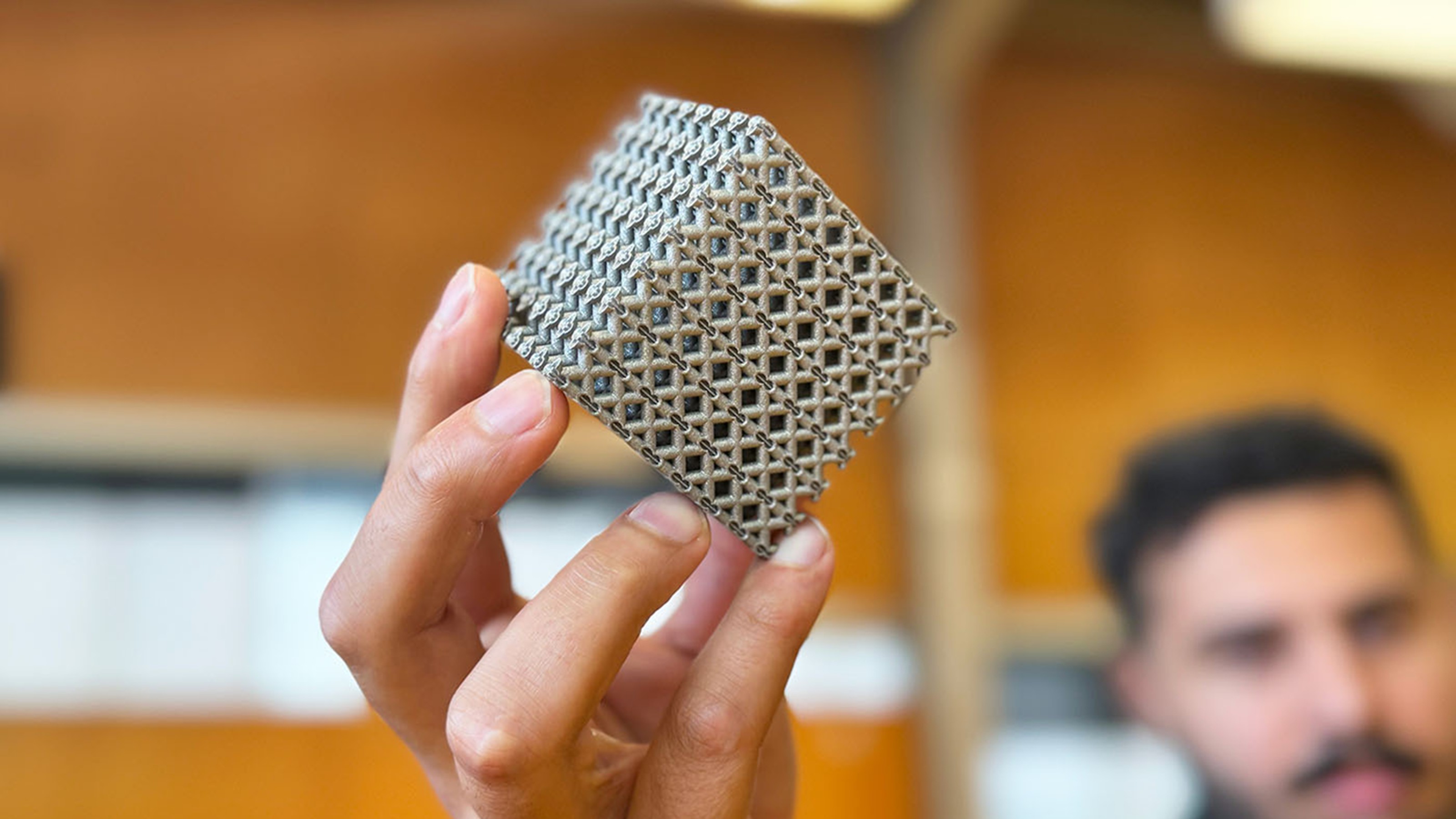Hardened wood knife is three times sharper than table knife

- Specially treated wood could compete with steal and plastic for some applications.
- The authors demonstrate that a wooden knife can cut a steak and wooden nails can hold boards together.
- Ultimately, the utility of wooden products will be determined by engineering capability and the marketplace.
Natural wood and metal served as essential human building materials for millennia. The synthetic polymers that we call plastics are a recent invention, exploding in the twentieth century.
Both metals and plastics possess properties that are excellent for industrial and commercial uses. Metals are strong, hard, and generally resilient against air, water, heat, and sustained stress. But, they are also more resource intensive (which means more expensive) to produce and refine into products. Plastics offer some of the capability of metals, while requiring less mass, and are extremely cheap to produce. Their properties can be tailored for just about any use. However, cheap commercial plastics make lousy structural materials: plastic utensils aren’t any good, and no one wants to live in a plastic house. Additionally, they are generally refined from fossil fuels.
Natural wood can compete with metal and plastic in some applications. Most family homes are built on wood frames. The problem is that natural wood is too soft and too easily compromised by water to substitute for plastic and metal much of the time. A paper recently published in the journal Matter explores creating a hardened wood material that overcomes these limitations. The research culminates in creating wooden knives and nails. How good is a wooden knife, and will you be using one soon?
A primer on wood
The fibrous structure of wood is composed of roughly 50 percent cellulose, a natural polymer that in bare form theoretically possesses good strength properties. The remaining half of the wood structure is mostly lignin and hemicellulose. While the cellulose forms long, tough fibers that give wood the backbone of its natural strength, hemicellulose has little coherent structure and thus does not contribute to the wood’s strength. Lignin fills gaps between cellulose fibers and performs useful tasks for living wood. But for human purposes of compacting wood and more tightly binding its cellulose fibers together, lignin gets in the way.
How to make wood 23 times harder
In this study, natural wood is made into hardened wood (HW) in four steps. First, the wood is boiled in sodium hydroxide and sodium sulfate to strip out some fraction of the hemicellulose and lignin. After this chemical treatment, the wood is made denser by squeezing it in a press at room temperature for several hours. This reduces natural gaps or pores in the wood and enhances chemical bonding between neighboring cellulose fibers. Next, the wood is pressed for several more hours at 105° C (221° F) to finish densifying and then to dry out. Finally, the wood is submerged in mineral oil for 48 hours, imparting water resistance to the finished product.
One mechanical property of a structural material is indentation hardness, a measure of its ability to resist deformation when pressed upon by a force. Diamond is harder than steel, which is harder than gold, which is harder than wood, which is harder than packing foam. Among a number of engineering tests to determine hardness, such as the Mohs scale for gemology, is the Brinell test. Its concept is simple: a hard metal ball bearing is pressed into the test surface with a certain amount of force. The diameter of the circular indentation created by the ball is measured. The Brinell hardness number is calculated with a mathematical formula; roughly speaking, the bigger the hole the ball makes, the softer the material. The HW measures 23 times harder than natural wood in this test.
Most untreated natural woods will absorb water. This expands the wood and ultimately destroys its structural properties. The authors use the two-day mineral soak to improve the HW’s water resistance, making it more hydrophobic (“water fearing”). A test for hydrophobicity is to place a drop of water on a surface. The more hydrophobic the surface, the more sphere-like the water drop will become. On the other hand, a hydrophilic (“water loving”) surface will spread the drop out flat (and subsequently absorb the water much more readily). So, the mineral soak not only dramatically increases the hydrophobicity of the HW, it prevents the wood from absorbing water.
How sharp is a hardened wood knife?
What might hardened wood be used for? The authors create two HW objects: knives and nails.
On some engineering tests, the HW knives perform slightly better than metal knives. The authors claim that the HW knife is about three times sharper than commercially available knives. But, there is one caveat to this interesting result. The researchers were comparing table knives, or what we might call butter knives. Those are not meant to be particularly sharp. The authors show a video of their knife cutting a steak, but a reasonably strong adult could likely cut the same steak with the dull side of a metal fork, and a steak knife would work far better.
How about the nail? An HW nail can apparently be hammered into a stack of three boards without too much trouble, though the relative ease compared to an iron nail is not carefully described. The wooden nail can then hold the boards together against a force ripping them apart with approximately the same tenacity as an iron nail. However, in their tests, the boards fail in both cases before either nail fails, so the stronger nail is not revealed.
Is the HW nail better in some other ways? The wooden nail is lighter, but then the weight of a structure is not driven primarily by the mass of the nails holding it together. The wooden nail will be impervious to rust. However, it will not be impervious to absorbing water or biological rotting.
Are wooden knives coming to a store near you?
Undoubtedly, the authors have developed a process to create wood that is substantially stronger than its natural counterpart. However, the utility of HW for any particular job will require further study. Can it be made as cheaply, and with as few resources, as plastic? Can it compete with a stronger, more attractive, and infinitely reusable metal object? Their research raises interesting questions. Continued engineering (and eventually the marketplace) will answer them.





